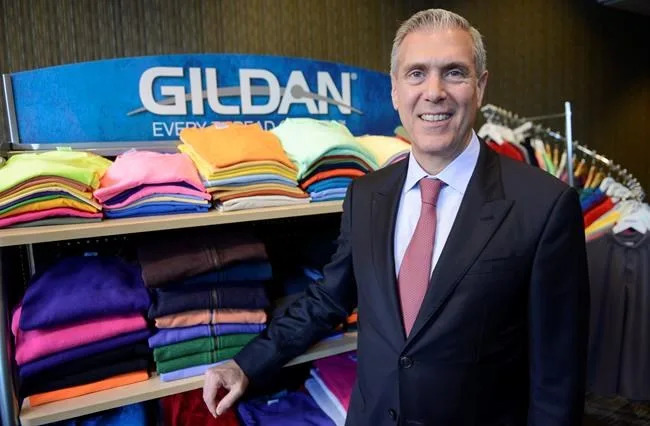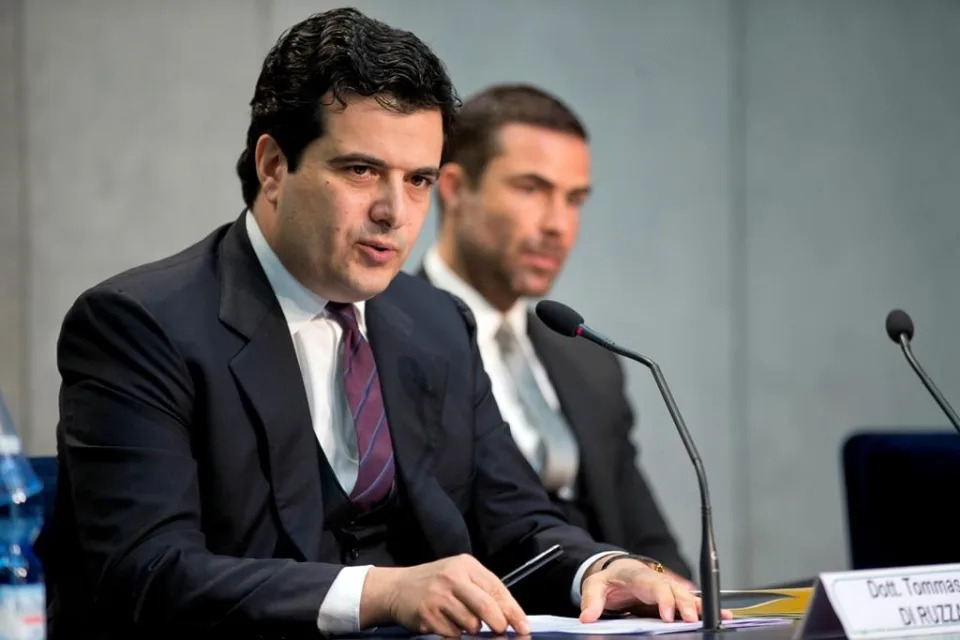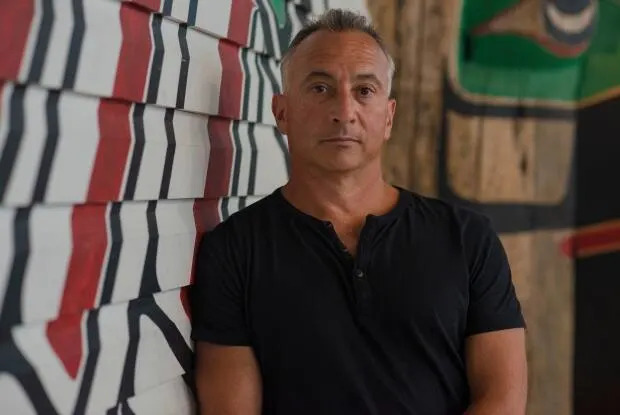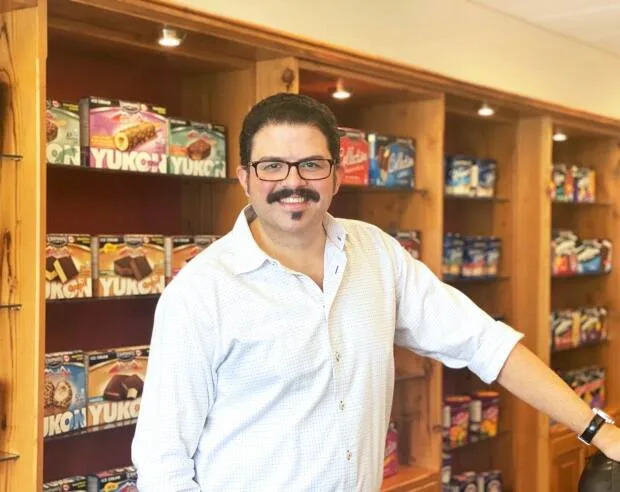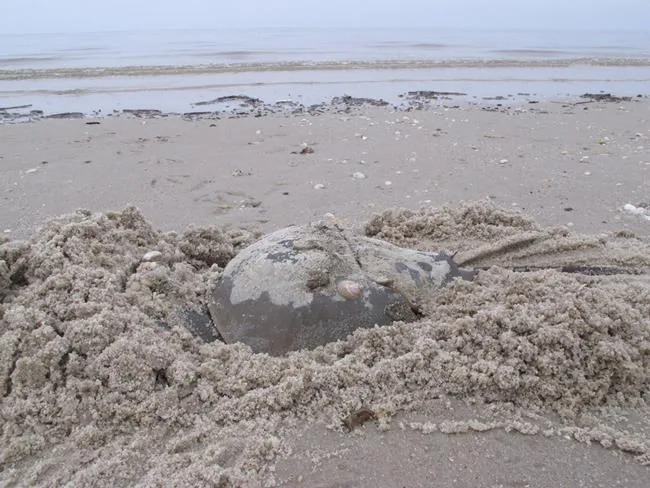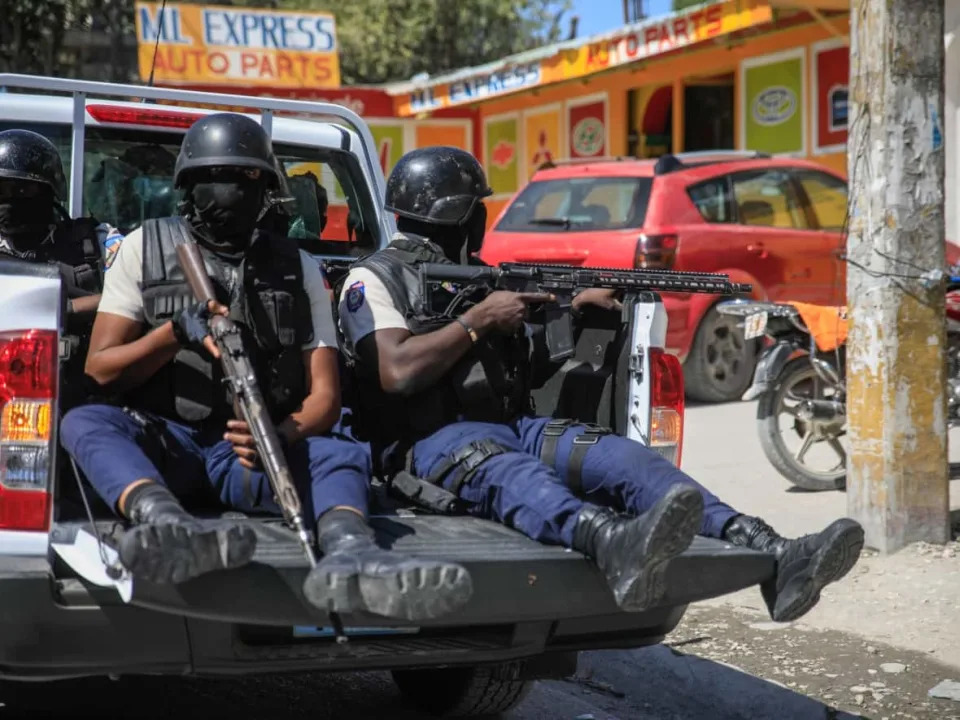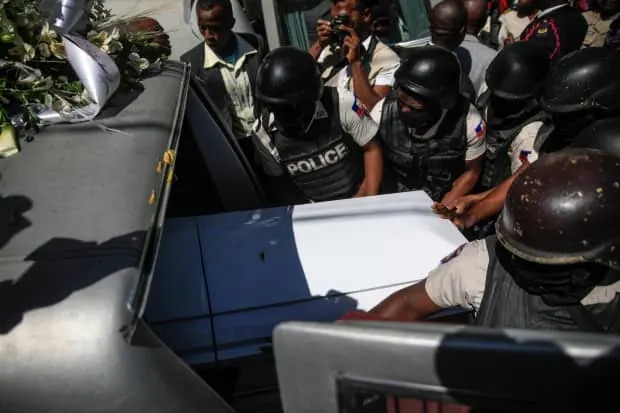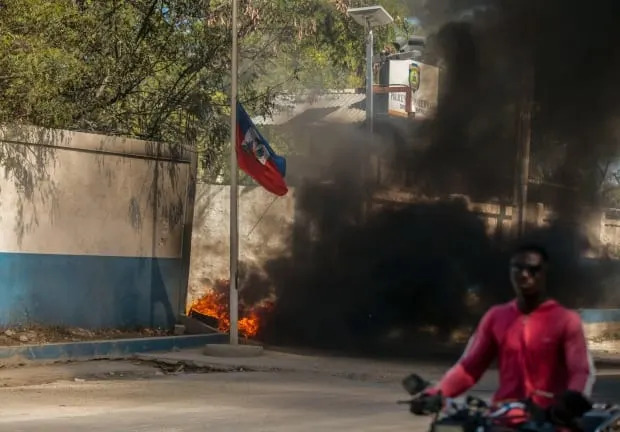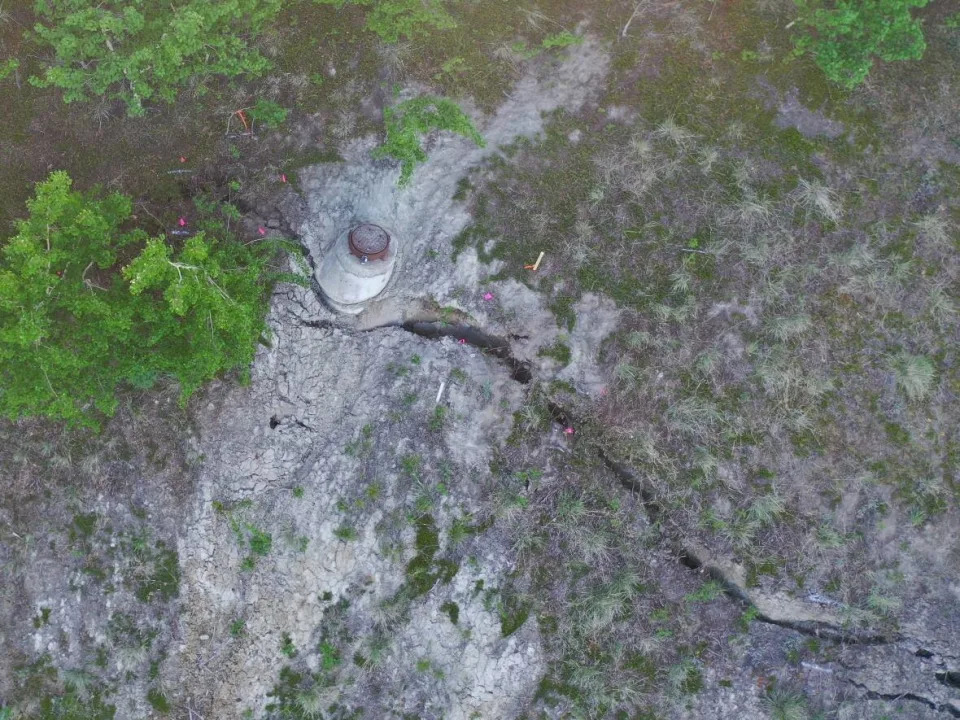ABOLISH THIRD PARTY AGREEMENT
Trudeau calls for renegotiated border treaty to halt Roxham Road migrants — U.S. envoy pushes back
Wed, February 22, 2023
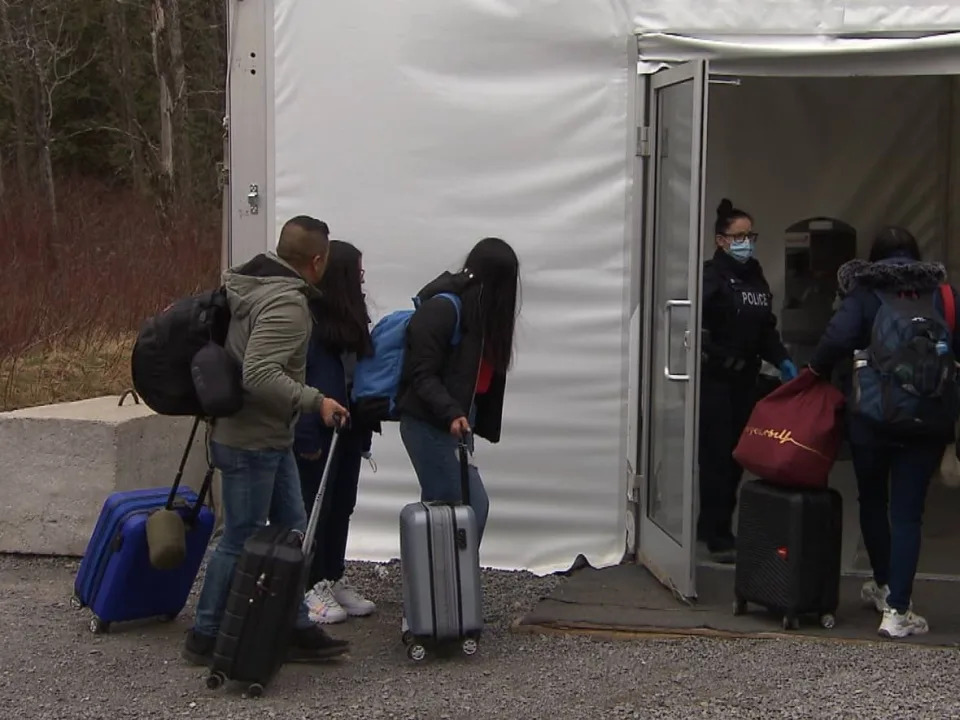
Asylum seekers arrive at the Roxham Road crossing. (Radio-Canada - image credit)
Prime Minister Justin Trudeau says the federal government is working on closing the irregular border crossing at Roxham Road by renegotiating the Safe Third Country Agreement with the United States — but the American ambassador to Canada says changing the deal wouldn't address the problem.
"The problem is we have 6,000 kilometres worth of undefended shared border with the United States … People will choose to cross elsewhere," Trudeau told a news conference Wednesday.
"The only way to effectively shut down not just Roxham Road but the entire border to these irregular crossings is to renegotiate the Safe Third Country Agreement."
But in an interview with CBC's Power & Politics Wednesday, Ambassador David L. Cohen said changes to the Safe Third Country Agreement would do "very little" to address irregular migration.
Cohen added that the talks between the two governments are about irregular migration generally. He called Roxham Road a "symptom of that problem."
"It is a mistake to think that you can solve this problem by treating only symptoms. You have to treat the underlying causes of irregular migration," he said. "We're committed to the productive discussions that we are having with Canada around that subject."
Cohen would not confirm that the United States is renegotiating the agreement with Canada.
"You've never seen or heard anyone from the United States confirm that there are specific discussions occurring on the Safe Third Country Agreement, and I'm not going to be the first United States official to make that statement," he said.
A statement from Immigration Minister Sean Fraser's office responding to Cohen's comments said Canada agrees root causes need to be addressed. But Fraser's office also maintained that the Safe Third Country Agreement needs to be "modernized."
"The reality is that the solution to irregular migration into Canada demands a focus on both the root cause in a migrant's country of origin, as well as measures that promote welcoming immigration policies with controlled borders," the statement said.
"We look forward to continuing our work with the United States to advance our work internationally and along our shared border."
The agreement governs asylum claims between Canada and the United States. Roxham Road is not an official border crossing; an influx of irregular migrants entering Canada at the site has prompted Quebec Premier Francois Legault and Conservative Leader Pierre Poilievre to call on the government to close it as a point of access.
In an open letter published in the Globe and Mail Tuesday, Legault said the refugee claims are pushing Quebec social services to their limits and the situation is raising humanitarian concerns.
Poilievre said Tuesday the government should come up with a plan to shut off access to Canada through Roxham Road within a month.

Patrick Doyle/The Canadian Press
But Trudeau dismissed any suggestion that the crossing could be closed by anything but a renegotiated Safe Third Country Agreement.
"Could somebody put up barricades and a big wall? Yes. If Pierre Poilievre wants to build a wall at Roxham Road, someone could do that," Trudeau said.
"People can toss out simplistic solutions. That's their right. But if someone wants to seriously solve the problem, you're going to have to roll up your sleeves and do the work, as we are."
Negotiations between Canada and the United States on the agreement are ongoing, Trudeau said. He did not say when the two sides are expected to wrap up the talks but said the government is "making real progress."
The agreement, signed in 2002, says migrants must submit their asylum applications in the first of the two countries they enter. The agreement does not apply to irregular crossing points like Roxham Road.
Approximately 39,000 people sought asylum in Canada by crossing at Roxham Road last year, Legault said in a letter to Trudeau last week.
In the same letter, Legault called on the government to help Quebec send some of the migrants to other provinces.
Fraser said Wednesday the government is working with other provinces to alleviate the pressures on Quebec by setting up temporary accommodations for migrants.
Fraser added that he sympathizes with Legault.
"Premier Legault has a very serious concern that he's right to raise," he told a news conference.
"It's not fair or right that one community or one province ought to bear the brunt of a challenge that we're facing as a result of Canada abiding by its domestic and legal obligations."
Trudeau said Wednesday that Quebec has been "stepping up significantly" by supporting irregular migrants.
But Fraser dismissed Poilievre's call to close Roxham Road within 30 days, calling the proposal "reckless" and "not a thoughtful approach."
"You would simply displace the problem to other points along the Canada-U.S. border," Fraser said. "The result would likely be serious risks that would fall on vulnerable migrants who are seeking a safe haven in Canada, who would be forced to potentially cross through a dangerous portion of the border."
Fraser said he'll be meeting with his American counterpart in the coming weeks to discuss the Safe Third Country Agreement.

